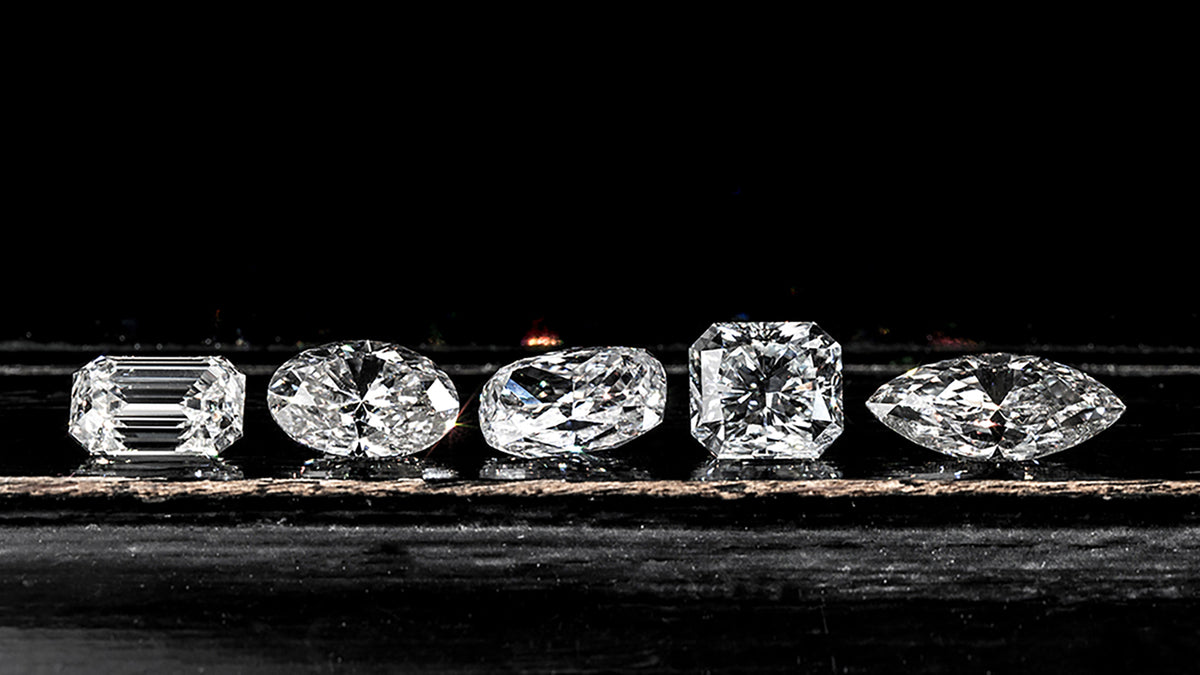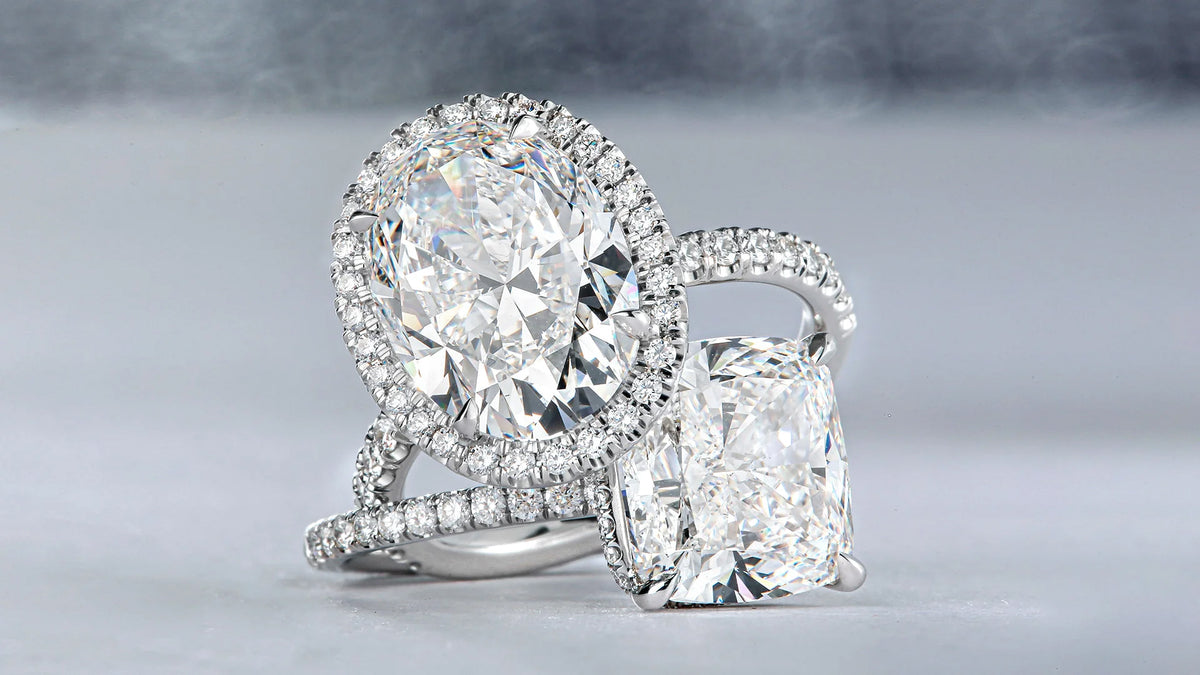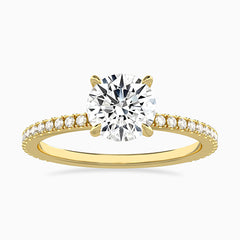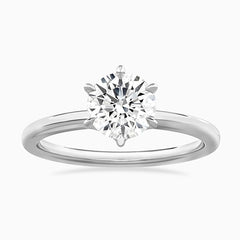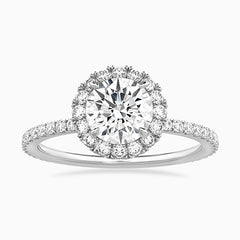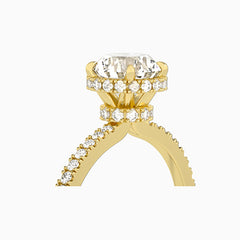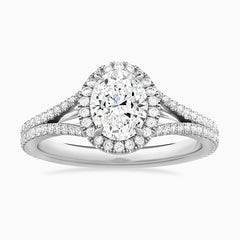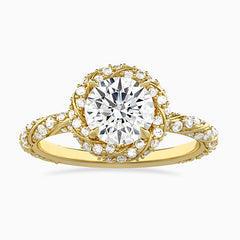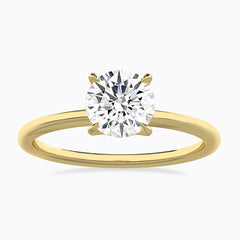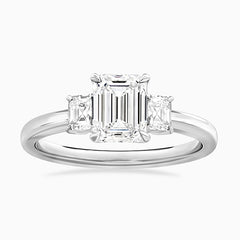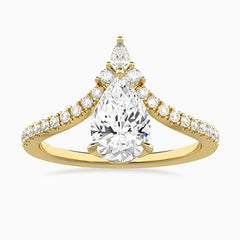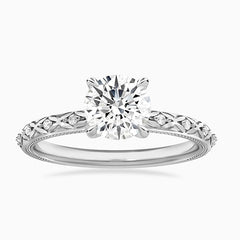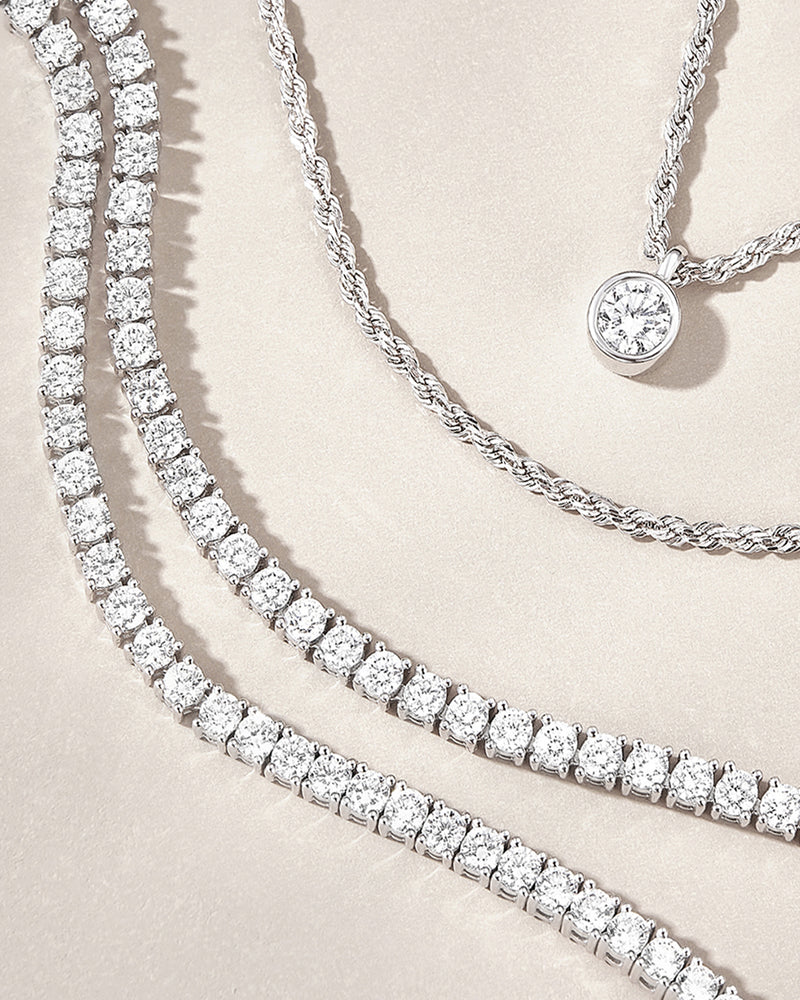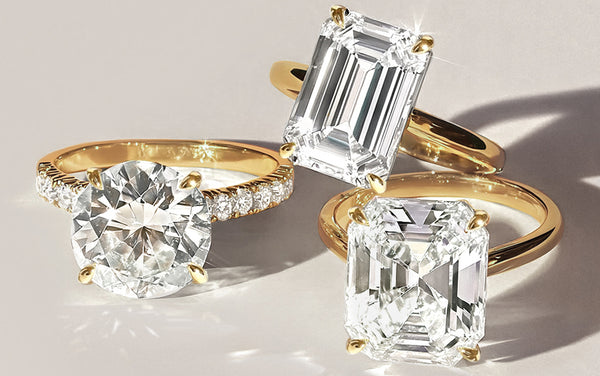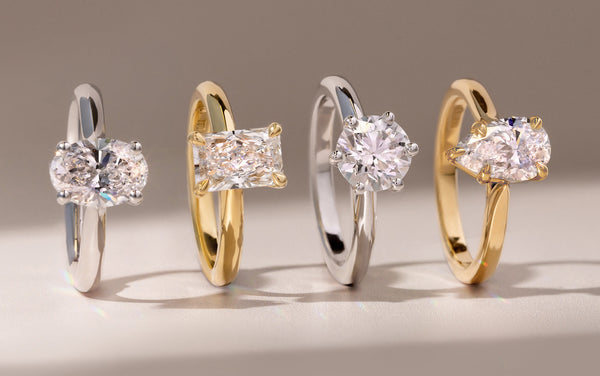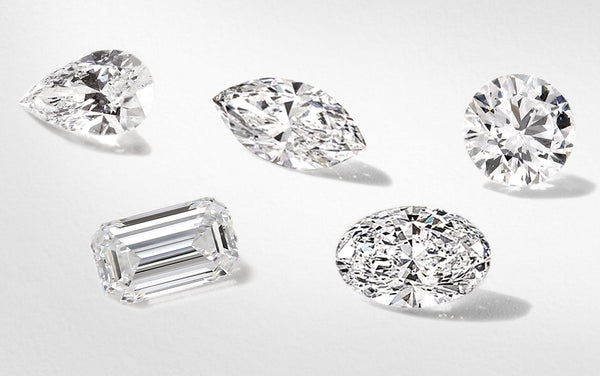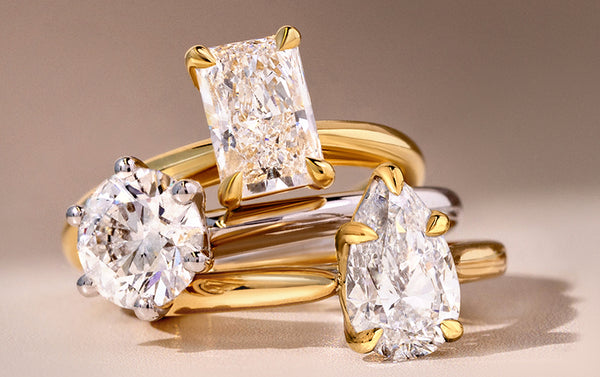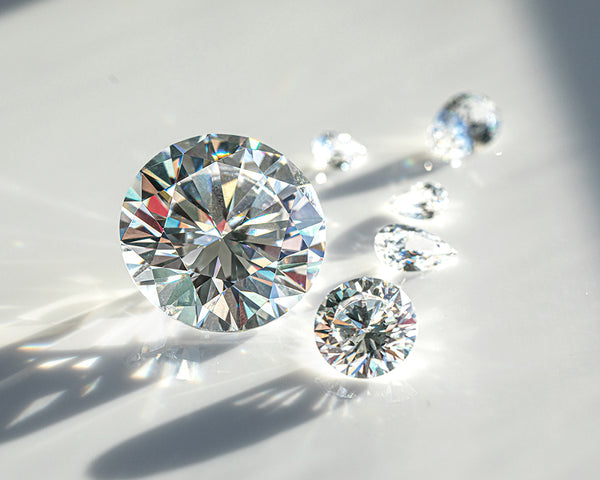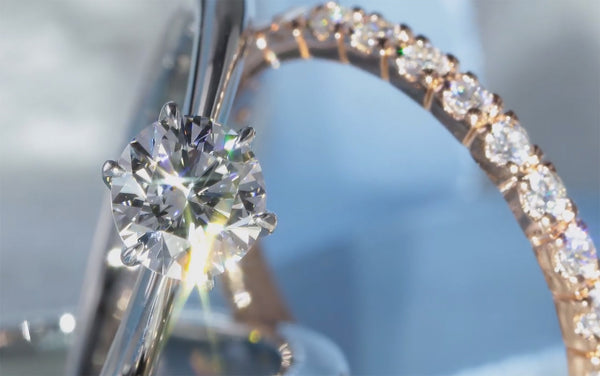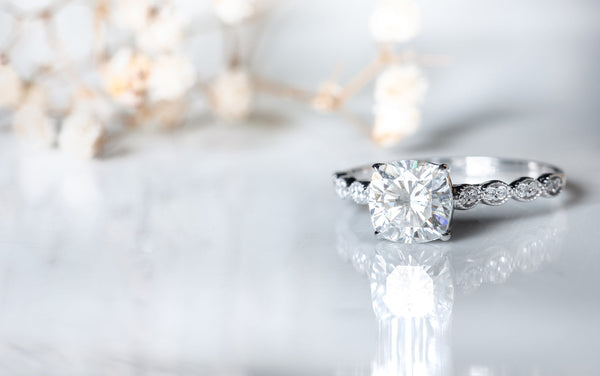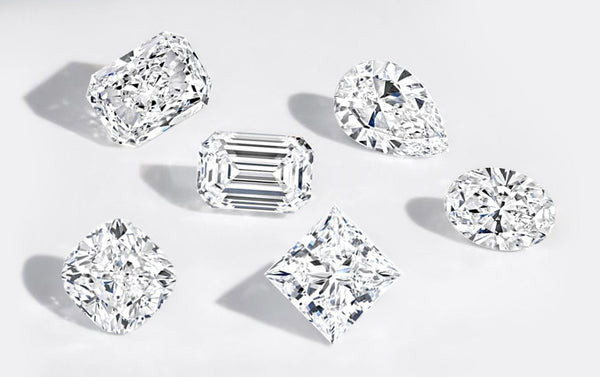What Is a Diamond?
A diamond is a crystal in which carbon atoms are arranged in a distinct cubic structure. Diamonds form under considerable pressure and heat, leading to their exceptional hardness and brilliance. Diamonds are a 10 on the Mohs scale of hardness, so they are the hardest natural substance on Earth- perfect for everyday wear, especially in engagement rings.
While many enjoy diamonds for their sparkle, that sparkle is a product of four factors: cut, clarity, color, and carat weight. These variables determine how light reflects and refracts off of the diamond, and how bright it appears to the viewer. Diamonds are magical, whether they were formed in nature or in a laboratory, because of their incredible optical properties and emotional symbolism.




